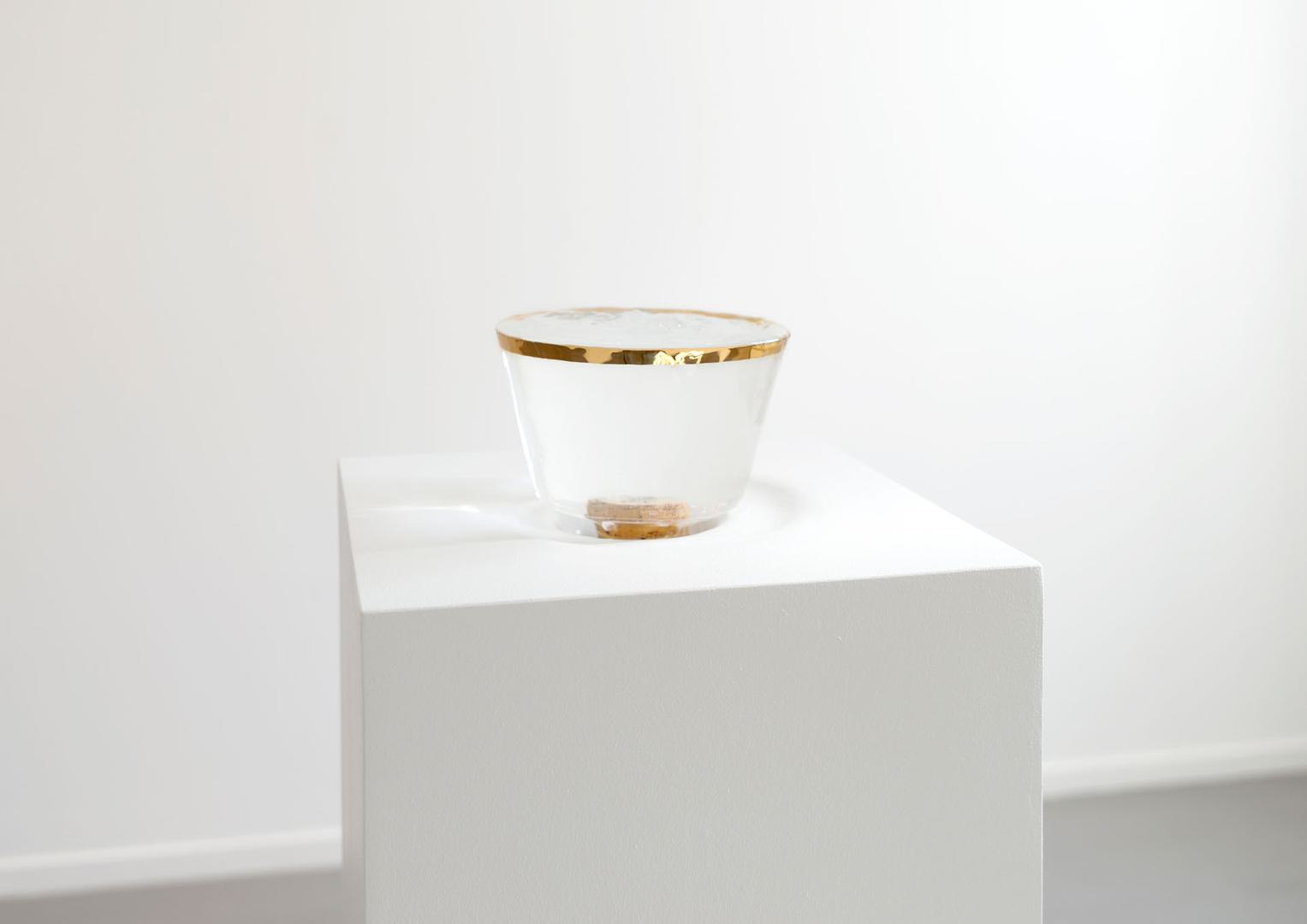Camille Norment
DRAWING and SCULPTURE

Camille Norment, DRAWING and SCULPTURE, 2017
Camille Norment's oeuvre moves in the borderland between visual arts, sound and music. She often tackles various social phenomena such as cases of sonic and social dissonance, and the power of sound over body, mind and society.
Dissonance is typically thought of as the opposite of consonance, the opposite of harmony. Another way of looking at dissonance and consonance is in the binary of disagreement and agreement. The tension that comes out of dissonance has been used by writers, composers and artists to express a challenge, discomfort or emotions that are more complex and ambiguous. Dissonance can be described as an unresolved space, a state of instability, constantly shifting, and open for new possibilities. In contrast, agreement/harmony is a state of stability, rest and closure.
In Norway Camille Norment is mostly known for her sound installations and her performances on the glass armonica. Glass, and the force of vibration – be it a physical, sonic, social, or historical force – were also important parts of her large scale installation at the Nordic Pavilion at the Venice Biennale in 2015. In this exhibition Norment’s main media are metal and ink on paper, and glass.
The modern glass armonica was invented by Benjamin Franklin in 1762. The German physician Franz Mesmer used the glass armonica to ‘heal’ people, typically hysterical women, but some believed the sound to cause insanity or sexual excitation, especially in women. The nervous system was thought at the time to function similarly to soundwaves.

Camille Norment, DRAWING and SCULPTURE, 2017
Mesmer developed a theory about a natural energetic transference that he claimed occurred between animate and inanimate objects. He called this phenomena animal magnetism, sometimes referred to as mesmerism. His theory later led to the development of hypnosis. The armonica’s popularity was short-lived, and it even became outlawed in some European cities. Since people thought the sound was powerful enough to heal, some thought it was perhaps also powerful enough to lead to madness, deviancy, or even death.
Camille Norment’s exhibition at Oslo Kunstforening includes older as well as new works, spanning between 1994 and 2017. The most recent work is a series of drawings made out of iron filings drawn with magnets. The drawings show simple forms, some reminiscent of sheet-music, soundwaves, or signal-noise. The oxidation visible in some of the iron filings yields a brownish earthy tone, giving the drawings a resemblance to dried blood.
Some of them manifest themselves in the shape of a scar, giving them a bodily reference. Scarring is the natural part of the healing process. In Norment’s schema these scars are signifiers of dissonance - a transformation from noise, violence, and a wound into a scar. In this way, dissonance can be thought of as a process of healing.

Camille Norment, DRAWING and SCULPTURE, 2017
Norment will also present a new series of glass sculptures, representing a thoracic part from human skeletons and the pelvis. The skeleton belongs to a small person, neither a child nor an adult, its gender unclear. The rib cage resembles a hand with its fingers spread out, or even distorted lines from musical staves.
The glass objects reveal an ambiguity – fascination as well as discomfort, fragility and violence. The fact that they look as though they are melting make them alien in their continual transformation.
Whether in drawing, sculpture, installation or sound, the focus in Camille Norment’s oeuvre is on dissonance as a space of transformation, that can be used personally, culturally or politically.
This constitutes Camille Norment’s first solo exhibition in Norway.
An artist talk will take place on Tuesday 20 June at 6pm with Ina Blom.
The exhibition has been generously supported by Arts Council Norway and the Association of Norwegian Visual Artists.

Camille Norment, DRAWING and SCULPTURE, 2017
Bio
Camille Norment (b. 1970) was born in Silver Spring, USA. She lives and works in Oslo. Norment’s recent performances have taken place at the Pushkin State Museum of Fine Arts, Moscow, 2017; Montréal Biennial, 2016; The Armory Show, NY, 2016; Lisboa Soa Festival, 2016 and Ultima Contemporary Music Festival, Oslo, 2015. Previous solo exhibitions have taken place at Lydgalleriet, Bergen, 2016; September Gallery, Berlin, 2009 and the Round Gallery, Atlanta Contemporary Art Center, 2007. She has participated in a number of group exhibitions in Norway and internationally, amongst others at the Kochi-Muziris Biennale in Kerala, India, 2016; Montréal Biennial, 2016; Marso Gallery, Mexico City, 2016; the National Museum of Art, Architecture and Design in Oslo, 2014 and 2012; the Museum of Modern Art, NY, 2013; Luleå Konsthal, 2013; Stenersenmuseet, Oslo, 2010 and Henie Onstad Kunstsenter, Oslo, 2009. In 2017 Norment will present a solo exhibition at Temple Bar Gallery, Dublin and participate in the group show «Soundtracks» at SFMOMA as well as the Lyon Biennial in France. In 2015 Camille Norment represented Norway at the Nordic pavilion at the 56th edition of La Biennale di Venezia.